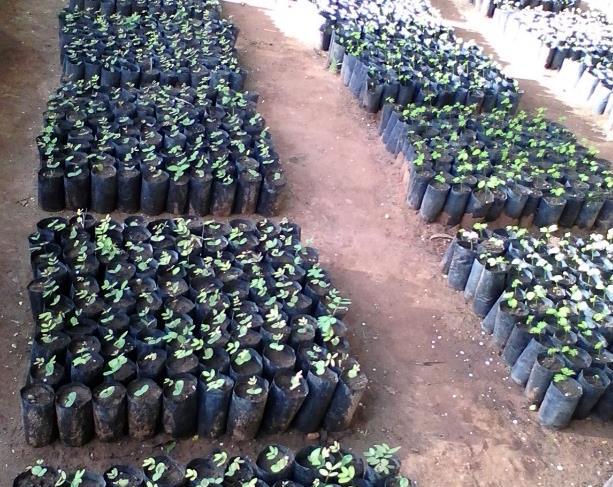Dorah Mbogo
Other projects
9 Jan 2018
Engendering Conservation: Gender-Responsive Approach in Restoring Habitat for Globally Endangered Bird Anthus sokokensis in Ruvu-South Coastal Forest, Tanzania
29 Apr 2019
Capacity Building for Conservation: Empowering Local Conservation Leaders in Communities around Ruvu-South Coastal Forest, Tanzania
This project focuses to restore degraded habitat for endangered anthus sokokensis through community-based revegetation program in Ruvu-south coastal forest reserve. In this project we will replant harvested native species in order to re-create ecological habitat, ecosystem processes, services and functioning. We will replant 5000 native and preexisted species, such as Brachystegia species, Grewia, Salacia, and Hymenocrdia. This will be done in collaboration with the forest community members, village leaders and local authorities. Prior to reforestation, we will recruit the participating team and conduct training on handling planting tools and the best procedures for successful tree planting based on Freeman et al., (2009). Team will be taught about site preparation, seedling storage and handling, planting techniques and post-planting management strategies. We will implement post-planting maintenance procedures to ensure the survival of seedlings, their earlier growth and avoid vegetation and animal damage.

Ruvu-South Coastal Forest Reserve forms one of the most important coastal forests in the East Africa coastal belt. The reserve supports the Eastern Arc and Coastal Forest endemic vertebrates and Important Bird Area (Baker & Baker, 2002) hosting rare and threatened forest bird species, reptiles, amphibians and plant species endemic to the Swahili Regional Centre of Endemism. The reserve is a fragile ecosystem hosting various endangered and endemic species including the globally endangered bird Sokoke Pipit (Anthus sokokensis) as well as a recently discovered critically endangered member of montane clade amphibian spiny-throated reed frogs Hyperolius spinigularis and Hyperolius ruvuensis.
This Forest Reserve like other sites of the endangered bird is suffering from continued forest damage from a breakdown of traditional systems of conservation, encroachment, selective logging, pole cutting and intensive charcoal burning. This project is the continuation of the long-term conservation program in Ruvu-south coastal forest reserve. The project will introduce teachers and pupils to a participatory approach to learning, engaging them in sustainability issues relating to the Forest Reserve both practically and academically. To ensure sustainability of the program and its long-term impacts, the Team will involve the teachers in the respective schools. We will also continue to build capacity among village conservation leaders through strengthening the skills and capacities of local community leaders, their organizations and other stakeholders to manage Ruvu south coastal forest sustainably and promoting awareness and responsible action.
To re-create degraded forest ecological habitat, ecosystem processes, services and functioning, the project will also replant 5000 native and preexisted species, such as Brachystegia species, Grewia, Salacia, and Hymenocrdia. This will be done in collaboration with the forest community members, village leaders and local authorities. Prior to reforestation, we will recruit the participating team and conduct training on handling planting tools and the best procedures for successful tree planting based on Freeman et al., (2009). Team will be taught about site preparation, seedling storage and handling, planting techniques and post-planting management strategies. We will implement post-planting maintenance procedures to ensure the survival of seedlings, their earlier growth and avoid vegetation and animal damage.